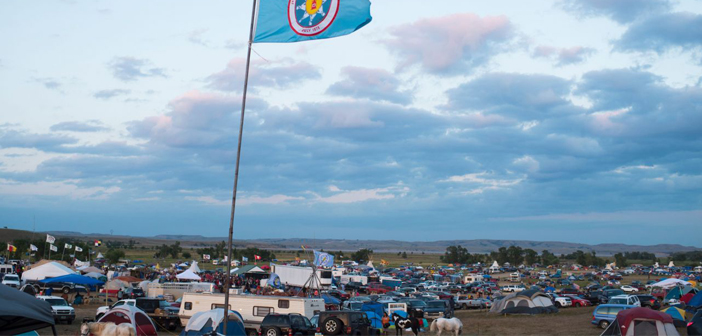Occupying the agenda for a long time with the war in Syria and operations in the region, Al-Bab was literally a death destination for Armenians who had been exiled from their homeland in 1915. Researcher Khatchig Mouradian, visiting professor at Columbia University, is writing an article on those times and shared an excerpt from it with Agos readers.
On New Year’s Day 1916, Hovhannes Khacherian woke up to the voice of an Armenian woman nearby chanting the hymn “Aravod Louso” (Morning of the Light). It must have taken him a few seconds to realize he is not at home in his ancestral Bardizag (Bahcecik), but in a concentration camp near a town he hadn’t heard of before: Al-Bab.
Hovhannes had arrived in Al-Bab the night before, on New Year’s Eve. Under the pouring rain, he and his companions had approached city’s gate and tried, without success, to bribe their way into the city. They’d been forced to go to the nearby concentration camp, where thousands of fellow Armenians huddled in tents.
Hovhannes would soon learn that thousands had already died in Al-Bab of starvation, disease, and violence. And for those who managed to survive until then, the ordeal was nowhere near over.
Yet Hovhannes survived the Al-Bab camp and wrote about it after the war. And as I write these lines, exactly 101 years after the night of his arrival, the ISIS-held Al-Bab is headline news.
Rain and Snow
Armenians who survived the first wave of deportations and massacres arrived in Al-Bab, northeast of Aleppo, as early as May 1915. The concentration camp the authorities set up there was one of the largest: more than a hundred thousand people were interned there during its operation (1915-1916) as one of the primary gateways for re-deportation to the desert.
By 21 July, there were 1,466 deportees interned in Al-Bab, mostly from Zeytun, Marash, Hajin and surrounding villages. The camp began to spiral into misery with the first rains in the fall. Erected on a field of clay, Al-Bab was transformed into a swampland; the ground could not absorb the rain. In his memoirs, survivor Hagop Seropian, who passed through Al-Bab, recalled, “The Armenian deportee camp appeared in front of our eyes in an endless field. The situation was indescribable. It had rained at night, turning the camp into a lake, the water reaching the poor people’s knees, all their belongings drenched in the pool, as they, with no energy left inside them, were rendered motionless in the filth, swamps, hunger, and disease…. Under the tents that had collapsed from the night’s rain and storm, thousands were unable to move, lying on their rags, in endless agony. No Red Cross, no help, no hope.”
It even snowed once. Khacherian remembered waking up to see the camp covered in a thin blanket of snow one morning in February 1916. “This was the last thing the starving, naked, and sick wanted.”
Life and Death
The camp was semi-porous, with locals generally allowed to enter to sell products, purchase or simply snatch women and children, or steal and abduct during night raids, with gendarmes often passively observing or, worse, aiding and abetting the victimizers for a share of the booty.
Food was scarce, and desperation drove thousands to eat whatever they could, including dead animals. Inmates scratched meat from the animal bones with rusted metal. “Many times they fought over the meat, and ate without cooking. Those who found they could make fire to heat or burn the rotten piece of meat were considered lucky,” described Andonian.
Unable to feed their children, some Armenians gave them away. Survivor Verjin Tingirian made that decision when she contracted typhus in Al-Bab. “We were starving, thirsty, and naked, and on top of that came typhus. I too got sick, my daughter had no one to care for her. Thinking that death was inescapable for me, I voluntarily handed her to an Arab who approached me at that time,” she related in her testimony. Many of these girls and boys were later sold by their owners or simply left to their fate on the streets of Al-Bab.
Father Dadjad Arslanian arrived to a chilling scene in Al-Bab one early morning in November 1915: “In a field that has become a lake from the rain, thousands of tents are set on the mud and waters. On the edge of the tents, a crowd of dead and dying people, so many that the buriers of the dead among the deportees, assigned by the government, could hardly keep up.” Learning that all the priests in the camp were either sick or had died, Father Dadjad took matters into his own hands, immediately appealing to the district governor for help in burying the 350 to 400 people dying every day of typhus, which had “encircled the camp like a fire.” The official provided the camp with 50 mezarcis (buriers) and a head-burier to oversee the process. The buriers were divided into two groups. Every morning one group toured the five thousand tents with the priest, gathering the corpses placed outside, while the other group dug graves in the cemetery outside the camp. In the afternoon, the corpses were brought to the cemetery and buried in the pits. “Between December 1915 and January-February 1916, some 36,000-40,000 people were buried like this,” observed Father Dadjad.
Re-deportation to the desert
In early 1916, camp guards accelerated the re-deportation process, hitting men, women and children with sticks. According to Khacherian, they yelled, “Haydi kalkın, çadırları yıkın, bir kimse kalmacak” (Get up! Bring down the tents! No one will remain here!). No Armenians were to be left in Al-Bab. Many deportees who had survived the hell of Al-Bab were now sent to concentration camps along the Euphrates River, stretching from Meskeneh to Der Zor and beyond. These camps too were emptied beginning in March 1916, and the deportees were marched in the direction of Der Zor. In the summer of 1916, gendarmes, reinforced by bandits, massacred up to 200,000 Armenians who had managed to survive up until that point.
By the end of August, “the road from Aleppo to Der Zor … has become relatively quiet,” German vice-consul Hoffmann reported from Aleppo. “Away from Meskeneh, the camps have significantly been reduced…. Der Zor only has a few craftsmen left who were working for the troops, whereas at the latter place only 8 weeks ago many thousands were still in the camp.” According to him, all others interned in camps or settled in houses in the region “had disappeared.” Armenians who sent letters and postcards from Der Zor to missionaries also went quiet, “which confirmed the rumors we heard about the massacre that had taken place there,” wrote U.S. consul in Harput Leslie A. Davis.





